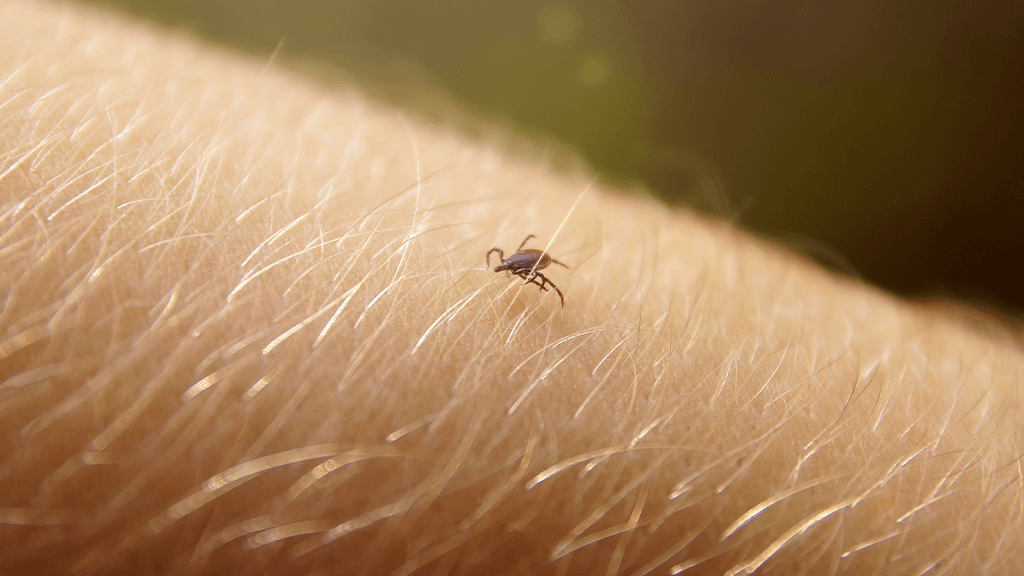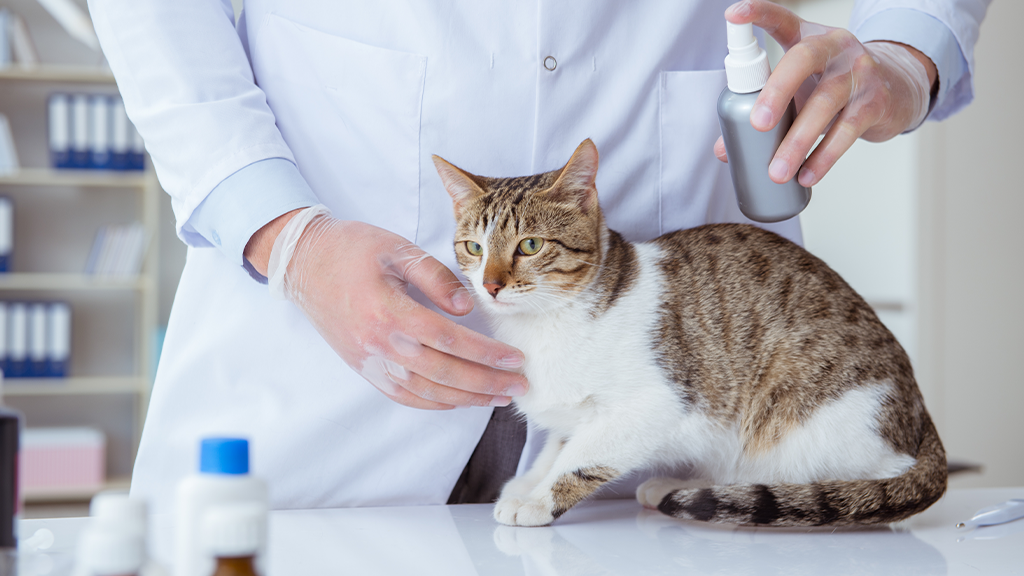Fleas vs Ticks: How to Tell the Difference?
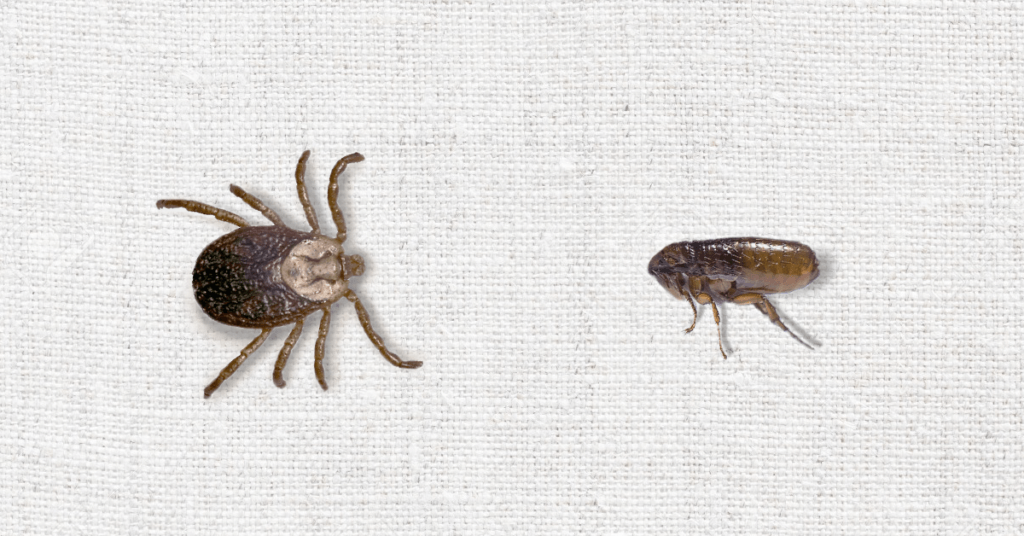
The onset of warmer days means many things: eating outside, beach days, and—unfortunately—flea and tick season. These parasites are known to cause painful and irritating bites, and the likelihood of encountering one of these insects increases if you have a four-legged friend in your midst. Flea and tick prevention can not only ward off itchy bites and annoying infestations, but it can also protect your home and family from the dangerous pathogens these pests can carry with them.
FLEAS VS TICKS: SPOT THE DIFFERENCES
Fleas are small, wingless insects that live on animals and feed off their blood. Ticks are much larger than fleas, and they have eight legs instead of six. They also have piercing mouthparts that allow them to inject their saliva into the animal’s skin. Ticks can carry diseases such as Lyme disease, Rocky Mountain spotted fever, and tularemia.
Fleas and ticks are parasites. They find hosts (both people and animals) and sustain themselves with nutrients from the host’s blood. If left untreated, flea and tick bites can be painful, cause allergic reactions, or even transmit disease.
Despite their shared parasitic behavior and tiny size, fleas and ticks are actually two different species. Knowing how to identify one from the other is the first step in protecting yourself from them.
SIZE AND APPEARANCE
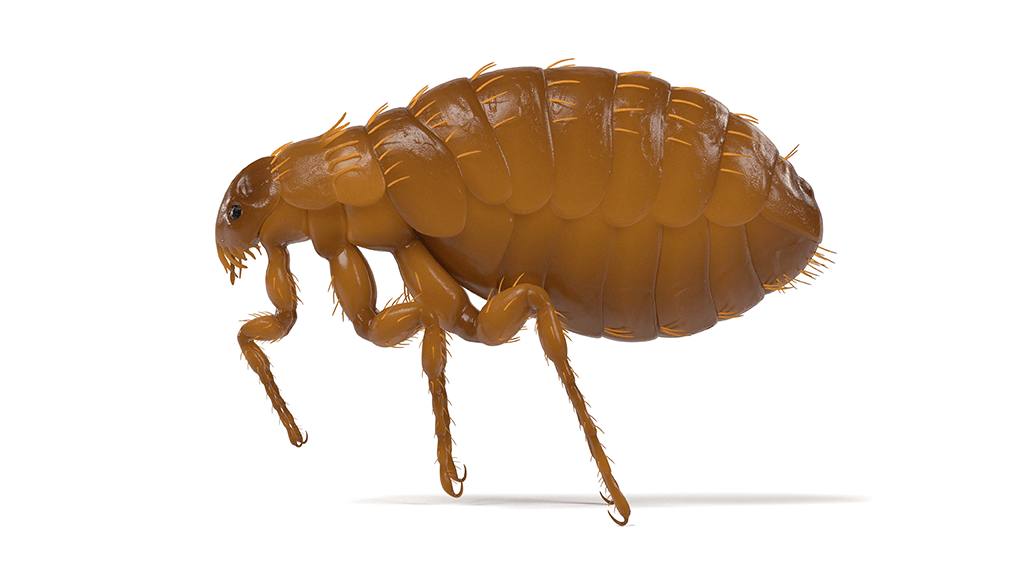
FLEAS: Fleas are generally smaller, with adult fleas only reaching 1/8th of an inch—about the size of a pin. Fleas are so small that most of the details of their appearance can only be seen under a microscope. Adult fleas are visible to the naked eye, but most often appear as brown specks in hair, fur, and clothing. These visible brown specks might not be fleas themselves, but “flea dirt”, another term for their feces.
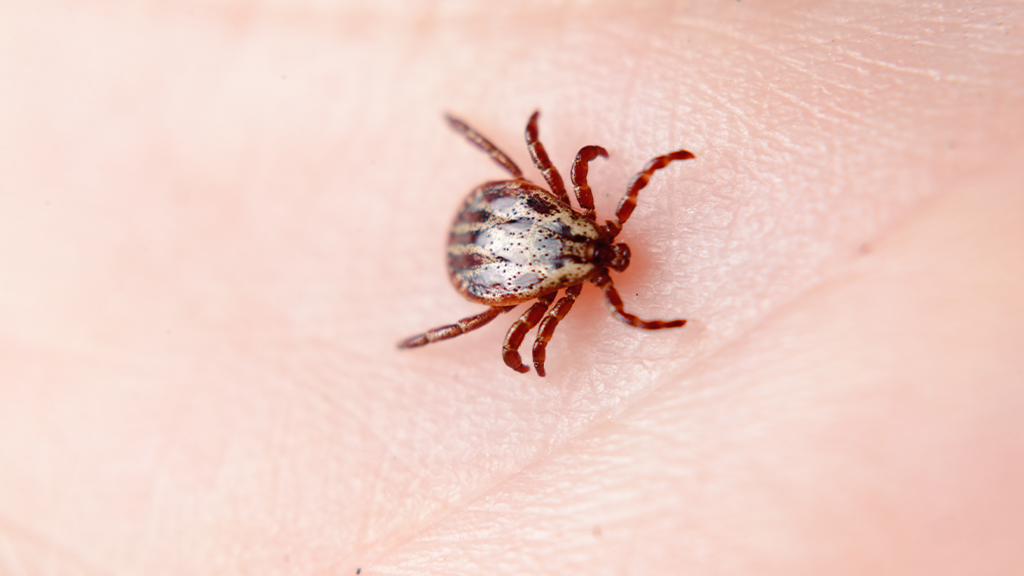
TICKS: Ticks, on the other hand, are almost always larger. Ticks can be red, brown, yellowish, grey, or black in color. Members of the arachnid family, they have eight legs that are frequently concealed by their round bodies, especially when they’re well-fed. After feeding on a host, a tick’s body increases greatly in size, even swelling to the size of a grape.
MOVEMENT
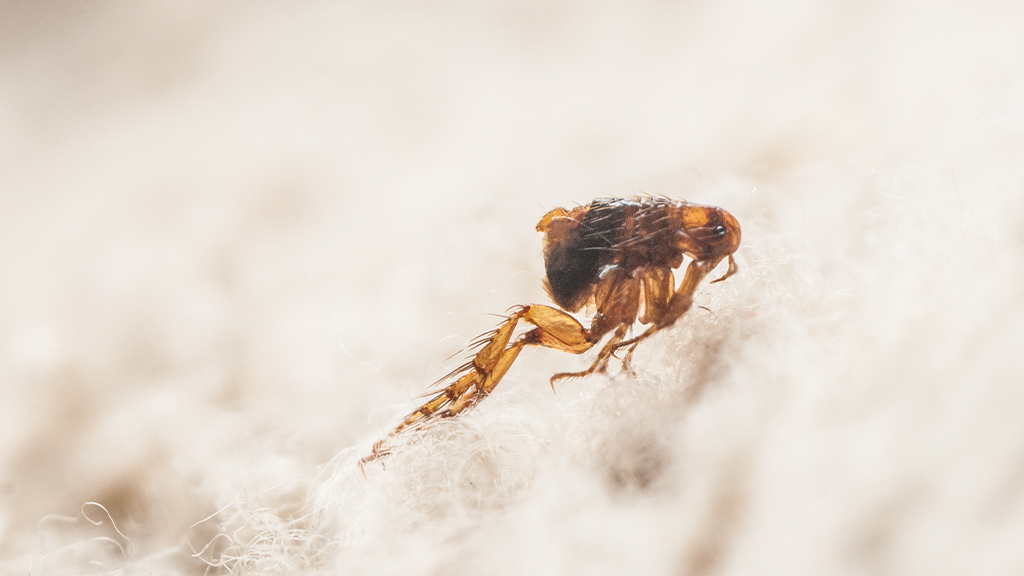
FLEAS: Though they do not have wings, fleas are amazing jumpers. They’re able to soar up to 7 inches high and 13 inches horizontally. Because of fleas’ small size, most infestations won’t be detectable until they’ve reached critical mass: when a large number of small, brown specks are seen on their host, most often a dog or cat, at one time.
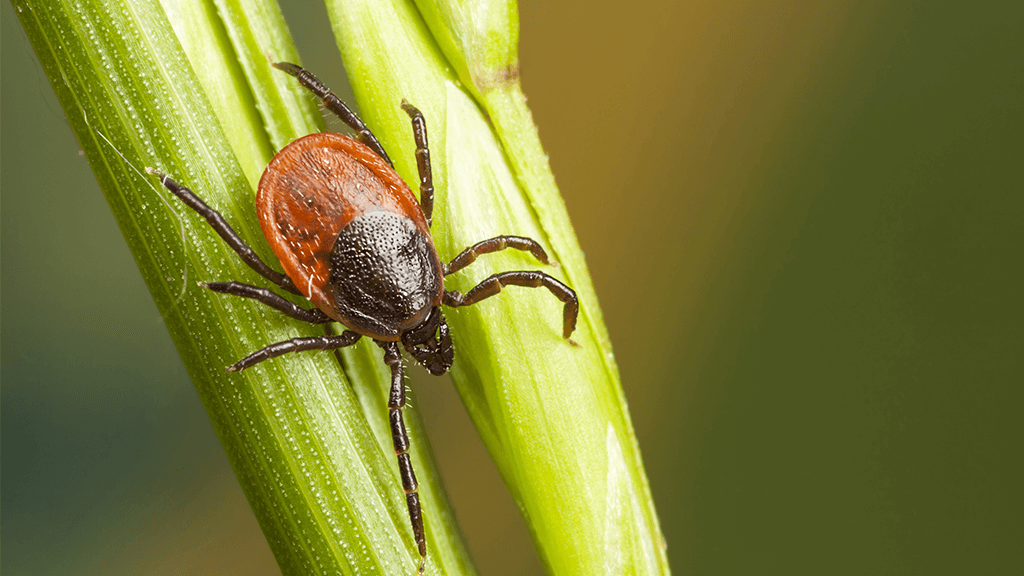
TICKS: Also wingless, ticks find their host by crawling, climbing, balancing, and dangling from loose objects waiting for someone to brush past them so they can latch on and feed. They are notoriously sly and persistent. They latch on to prey when at their most vulnerable: when resting, sleeping, or otherwise immobilized.
BEHAVIOR

FLEAS: They’re in it for the long haul; fleas prefer to find a suitable host and live out the rest of their days eating, sleeping, and reproducing while residing in the fur of one warm-blooded animal. They’re able to eat fifteen times their own body weight in one day, and considering that one female flea can lay up to 50 eggs at one time, that’s a lot of irritating bites. Fleas are generally found to be an on-pet and indoor pest infestation problem, and the presence of fleas indoors is almost always introduced through a furry host.
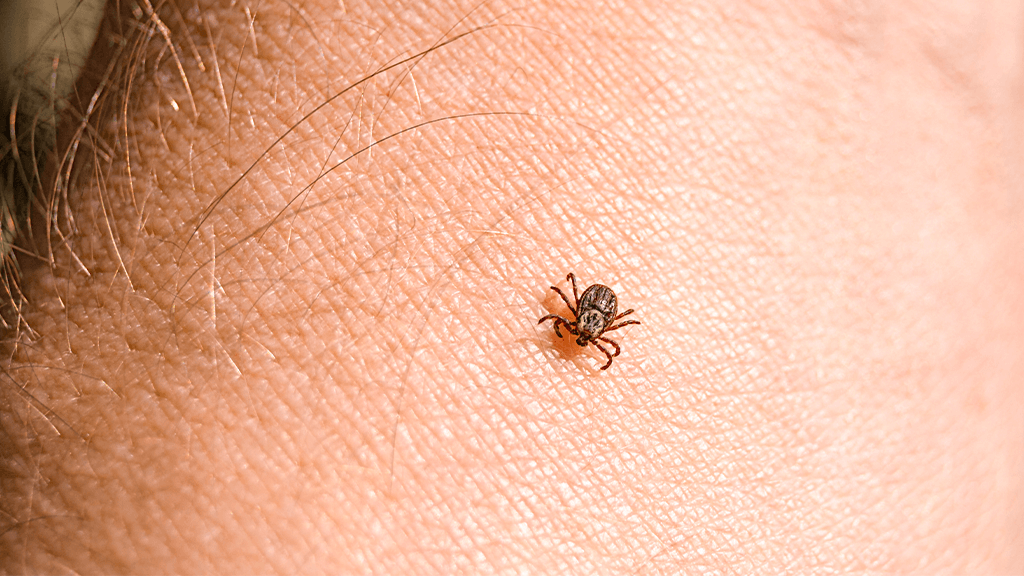
TICKS: Rather than find a single host, ticks move from one body to the next. After a long feeding from one host, a tick will unlatch and drop to the ground to lay eggs, find a mate, or lie in wait for the next warm-blooded body to come by. Ticks have a patience that is unmatched and can wait for months at a time between meals. People and animals are more vulnerable to ticks when spending time outside. Ticks can hitchhike in socks, collars, shoes, or even hair for hours before latching on for a meal.
KNOW THE SIGNS
If these parasites haven’t made a direct appearance, but you’d like to err on the side of caution with a bite or get ahead of an infestation, there are several signs that indicate one has made you or someone you love a host.
CHECK ON ANY BITES
While both flea and tick bites are irritating, they vary in severity. Like any bug bite, they can result in redness, irritation, or itching. A flea bite is likely to be much smaller, while a tick bite often has a “bullseye” appearance where the tick burrowed its head to feed. Tick bites might also develop a dark scab at the center.
Be cautious when evaluating and treating bites. Because a tick can feed for up to two weeks at a time on one host, a bite might have a dark center that appears to be a scab but could actually be the tick still feeding under the skin. If a tick is still latched, grab some gloves and tweezers. Firmly grasp the visible part of the tick as close to the skin as possible & pull outward without squeezing or twisting. Check the tick after removal to ensure it is whole, as any remaining parts left under the skin may cause infection.
MONITOR ANY SIDE EFFECTS
Both fleas and ticks carry dangerous pathogens and diseases. Any pest’s bite can cause an allergic reaction due to their saliva, so caution must be taken to monitor bites as soon as they happen. Fleas bites can spread bartonellosis, a bacterial illness with a rash and flu-like symptoms. Fleas can also transport tapeworms and even, in rare cases, cause anemia through their bites. Flea bites are mostly itchy and annoying, but if any unusual symptoms develop after a bite, a call to the doctor is advisable.
Tick bites, on the other hand, require more attentive monitoring. While many tick bites are benign, some diseases can be transmitted from the tick to host in mere hours. Some diseases such as Rocky Mountain spotted fever or Lyme disease can produce serious symptoms, many of which are life-threatening. If after a tick bite, you or a loved one develops a fever, fatigue, loss of appetite, or other unusual symptoms, seek medical care as soon as possible.
HOW CAN I PREVENT FLEAS OR TICKS?
USE SAFEGUARDS
Both fleas and ticks are likely to find animal hosts before they latch on to a person, but that doesn’t mean you’re in the clear. To prevent your pets from getting fleas and ticks, and to prevent them from transporting them to you and your loved ones, there are several topical solutions that deter these parasites available through pet stores and veterinarian’s offices alike. Preventative shampoos, oral supplements, and topical solutions make your pet’s body less inhabitable for fleas and ticks.
To reduce the risk of ticks when spending time outdoors, avoid areas where ticks are known to be present. When adventuring outside, wear clothing that conceals your arms and legs and stay away from brush or branches where ticks might be lurking, waiting for a host. A bug repellent with DEET can also ward off ticks. After heading back from an excursion, always do a thorough tick check on yourself and your family, as the longer a tick is left to feed, the higher the risk of potential exposure to harmful pathogens.
CALL FOR BACKUP
If you’re not sure whether you saw a tick or flea, a pest control professional can help. Rarely will ticks cause an indoor infestation, but many times fleas can reproduce so rapidly that their population numbers outgrow their host and so does their food supply, forcing them to find other hosts or places to reside. In either case, our pest control experts are able to identify the offending pest and help detail a control plan. No pest problem is too large or small, and our professionals are ready to ease the burden of identification and provide guidance for the next steps before, during, and after any flea or tick problem you may face.

